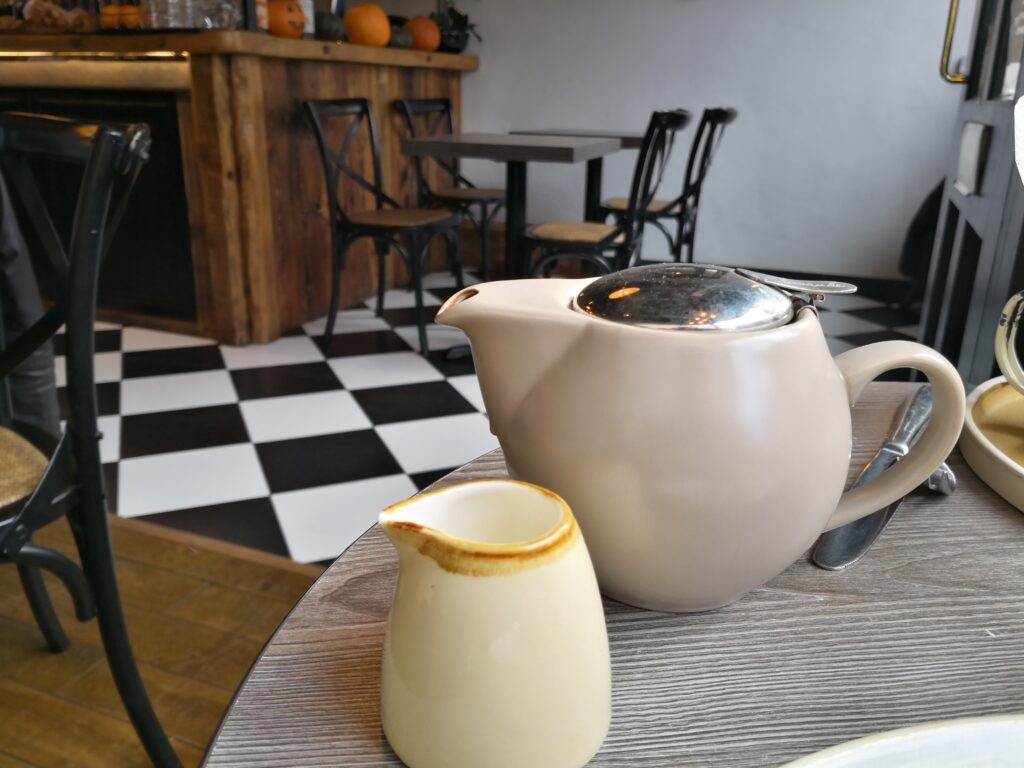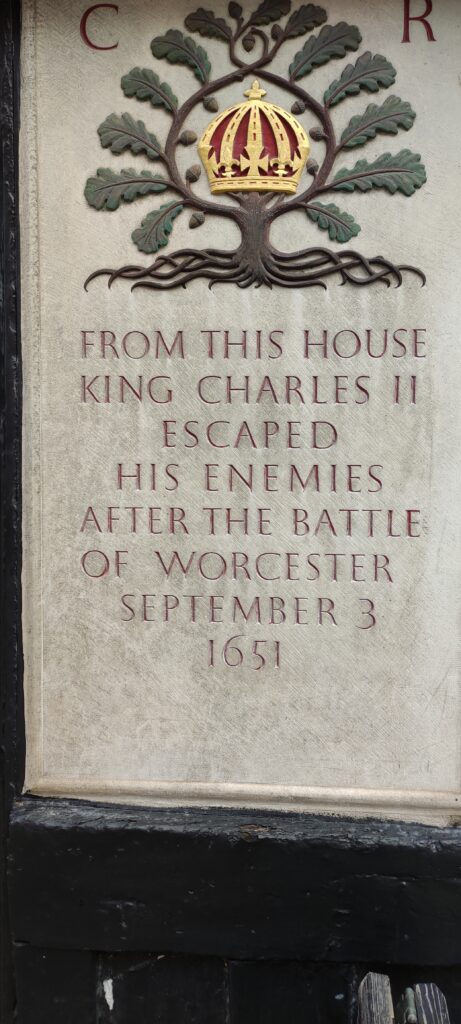- Start – Worcester Guildhall
- Finish – Worcester Guildhall
- Distance – 6.75 Km
- Time Taken – 2 hours 20 mins

We are going to Worcester for a three day mini-break. We should have been going to the Alps, but Covid made that too stressful, so we decided to continue our plan to investigate places we might like to retire to and investigate their culinary and walking potential.
Our plan for this weekend is to investigate the historic city of Worcester, spend a day walking down the Severn Way towards Bristol and another day walking in the Malvern Hills.
So, Day 1 we arrive in Worcester.
The journey here from Hampshire was as ever, rather eccentric. Tom Tom is always keen to avoid the inevitable snarls on the A34 and M40 and so what should have been a straightforward but boring run up the English Motorway system, became an interesting (if slightly hair-raising) trip through the villages of Wiltshire and Gloucestershire. The Cotswolds are very pretty and being country people we had no problem putting our car in the hedge when required, as larger exiles from the motorway navigated the tiny rural lanes.
Upon entering the City of Worcester itself, it became clear that this is a place which favours the car over pedestrians. Unlike other cities of its size and pedigree the main road runs right through the city and even in the historic centre pedestrianized areas are few.
We started our investigation of Worcester with lunch at the Black and White Kitchen – https://www.blackandwhit3.co.uk/ on the High Street which advertises its all day breakfasts produced with creativity and flare! I had a lovely omelette and Craig the chicken wrap, both of which came with delicious fries.
The Black and White also passed the ‘Katy Tea Test’ in that it delivered a proper pot of tea, with a milk jug, for a non-exorbitant cost!

After an excellent lunch and armed with a leaflet from the Tourist Office and the newly purchased Worcester History Tour by Mr Ray Jones, we embarked on a walking tour of historic Worcester.

Ray clearly has an axe to grind against the local planning authorities and his book is filled with lovely pictures of Worcester past, accompanied by a blistering commentary on the trail of destruction said authorities have permitted. “An unforgiveable act of civic vandalism”!
We start off at the Guildhall. This very impressive Grade 1 listed building, was built in the reign of Queen Anne and with statues of both Charles the 1st and 2nd on either side of the doorway, sets out Worcester’s stall as the monarchies most faithful city “fidelis civitas”. Worcester was the site of both the first and last battles of the English Civil War.

The figure with its ears pinned back is supposed to be Oliver Cromwell but I am not convinced.
As we continue with the walk around the city certain themes become evident.
Worcester has been continually occupied since at least the 7th Century and probably even before that! Each century has therefore built upon the structures of the last. The result is that much of ancient Worcester is hidden. The impressive Georgian buildings which litter the High Street are just facades erected on top of pre-existing wooden Tudor structures and when you venture through the arches between these facades you enter microcosms of medieval/early modern society where houses, stables, shops and stalls are all on top of one another in narrow corridors. Of course now these buildings are occupied by boutiques and fancy cafes but you can still get a sense of the vibrancy of the medieval culture which existed here.

The Civil War (1642 – 1651) is also very important here. Worcester fought for the King and is still very proud of that fact. We visit the pub that Charles II was staying at and from where he escaped to France when the battle of Worcester was lost

and we look at the bridge marking the Sidbury Gate broken down by the Parliamentarians in their conquest of the city.
Next to the gate is the Commandery – a building dating from the 11th century which now houses the headquarters of the Civil War Re-enactment society and a museum in early modern warfare.
We also find evidence that the war between Mr Ray Jones and the planning Authorities of Worcestershire County Council is not a new thing! The imposing 1830’s built Crown Court dedicated to Queen Victoria,

has in a corner this plaque:

clearly demonstrating the desire of the County Council to curb the proclivity of the locals to wander about important civic structures at will!
The other important theme of Worcester we discovered today is the River Severn, which really has been the life blood of this city since ancient times. However, since we are going to spend tomorrow walking down it, I will leave discussion of that until then.

We are staying for this weekend in the Fownes Hotel, which is a former Gloving Factory.

As we learned today, in the 18th Century, Gloving and Porcelain production are the major industries here. It is what makes Worcester different, I think. It’s wealth, unlike a lot of the Midlands and the North starts in the 18th rather than the 19th Centuries.
We had organised this visit in something of a rush, and so when phoning the best reviewed restaurants in Worcester with a view to booking a table we were laughed out of court! So, feeling rather desperate we ended up at the Olive Branch (:-)) Tapas restaurant.

The food was abundant and for the most part very nice. The chorizo was particularly good, which is why in this photo it has mostly disappeared :-). However, the Calamari was overdone and the chicken lacked depth, so on the whole I think we would probably only give it 3/5.







Is York on you list of historic cities to wander?
Brilliant to see that you out there exploring again!
You appear to have picked another window of largely good weather.
Have a fabulous time and thank you, I am really enjoying reading about your adventures although am somewhat envious of the food😃